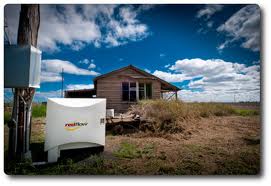Australian battery storage developer RedFlow says it will soon make its long-awaited move to manufacturing and expects to have its unique zinc bromine flow batteries in commercial production by the end of the current financial year.
Redflow, which has undergone a major restructuring in the last 18 months so it can focus on battery development, expects to sign a deal with a manufacturer shortly, with production to begin within 9 months.
“We believe we are now at a stage where we have a product ready for commercial applications,” CEO Stuart Smith told RenewEconomy. “We are in the process of reviewing final proposals from the shortlisted manufacturers and expect to make an appointment shortly.”
One of Redflow’s first customers will be the telecommunications group Emerson, which is looking at using its batteries with its solar panels to provide power to remote sites along its networks of poles and wires. Another customer is currently testing the technology for military applications.
Redflow will be the first to the market with a “modular flow battery” and Smith says this should give the company a significant advantage over rivals.
Redflow’s core product is a 3kW/8kWh battery. The flow battery give it a daily deep charge and discharge capability which the company says make it ideal for storage and shifting of intermittent renewable energy, and managing peak load or supporting off-grid systems.
The battery has been deployed in around 100 applications so far and is easily scalable. A 90kW array has been deployed at the University of Queensland’s 1.2MW solar array.
Redflow expects the global opportunities for cost-effective energy storage solutions to be immense – for electric and hybrid vehicles, distributed energy and utility grid storage .
Smith says it is clear that increasing power demand cannot continually be met through building new generation and distribution capacity. “The move towards distributed generation using sustainable resources such as the sun and wind supported by government regulation, funding and renewable energy targets is well under way worldwide,” he says.
“The efficient capture, storage and use of these resources are fundamental to reform which has only just commenced, and we believe our ZBM has the performance characteristics to capture a large portion of this market and address these needs.
However, Smith says it is unfortunate that nearly all commercial interest in its new technology has come from outside Australia. Despite receiving government funding that has been critical in the development of the technology, Smith says the commercial engagement from within Australia has been lack lustre.
Smith says local companies – despite an obvious market for the technology because of the shape and the cost of the local grid – are reluctant to adopt home-grown technologies.
“It is certainly disappointing that an Australian company with locally developed knowhow with an opportunity to be a global leader has had to look offshore for its commercialisation when local opportunities exist.”
The battery has an estimated cost of around $700kWh, although that could be reduced substantially depending on manufacturing costs and improvements. Smith says that until volumes are ramped up to obtain the decreased costs, it is probably priced out of the residential markets, but it could already be attractive for network operators who would otherwise have to spend to upgrade their networks of poles and wires.
Redflow has about $4.1 million is cash and expects a Commonwealth R&D tax rebate of approximately $2.5 million in September, as well as a $2.9 million AusIndustry Grant that was recently awarded to the company.
Redflow made a spectacular debut on the ASX in 2010, with its stock jumping from the $1 issue price to a peak of $1.70 soon after. However, an over-ambitious business plan under previous management, delays and a restructuring that included a winding back of its Brisbane operations saw its share price plunge to below 6c in 2012. It is still trading at just 9c a share and the company continues to look for a cornerstone investor.










